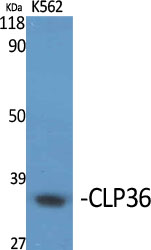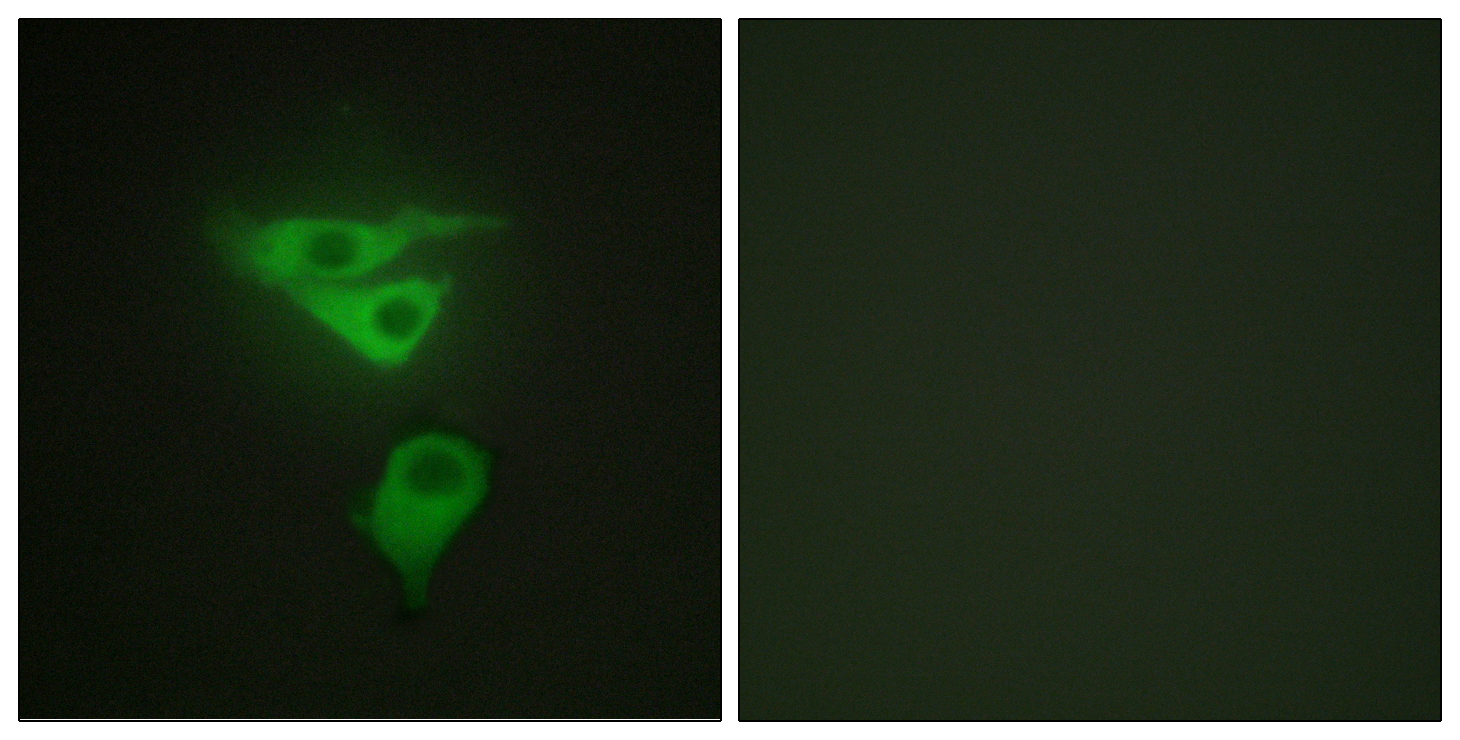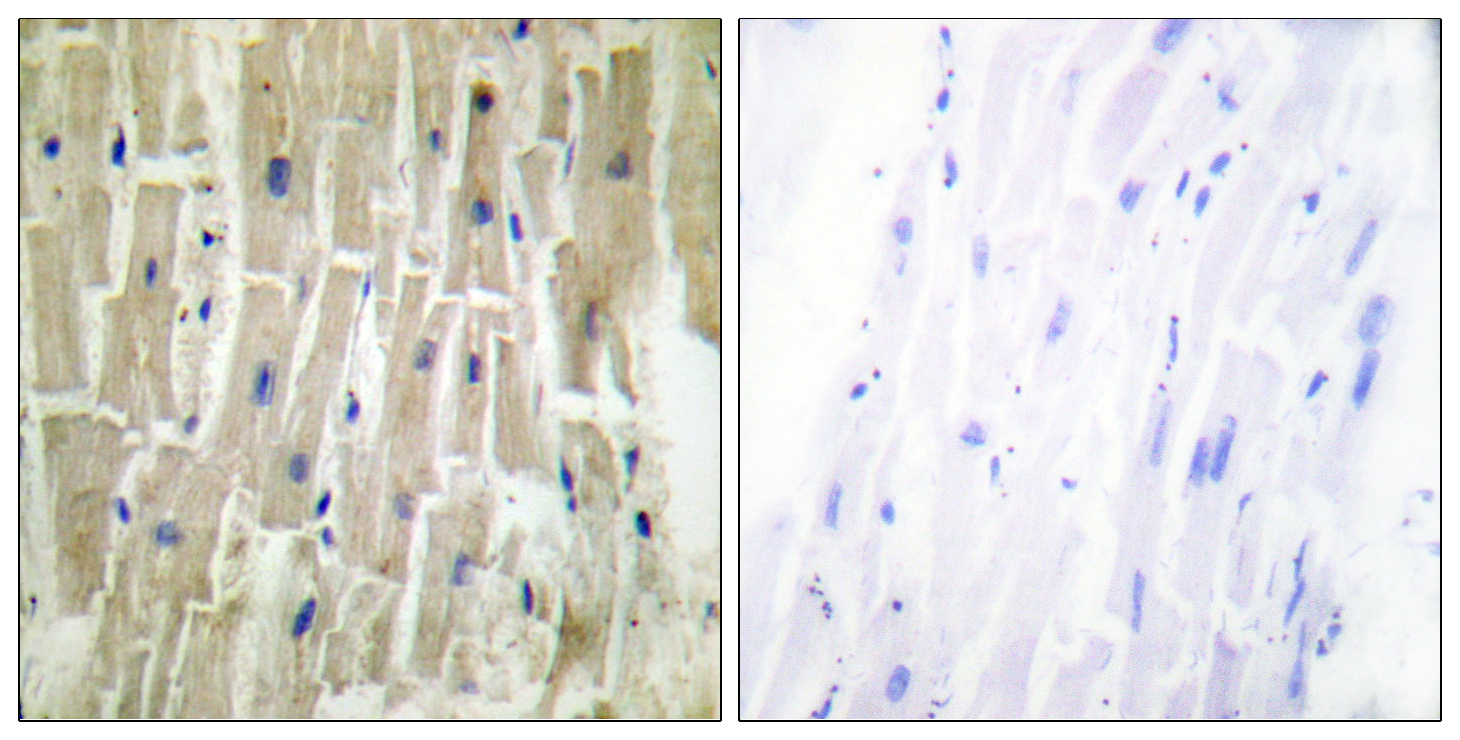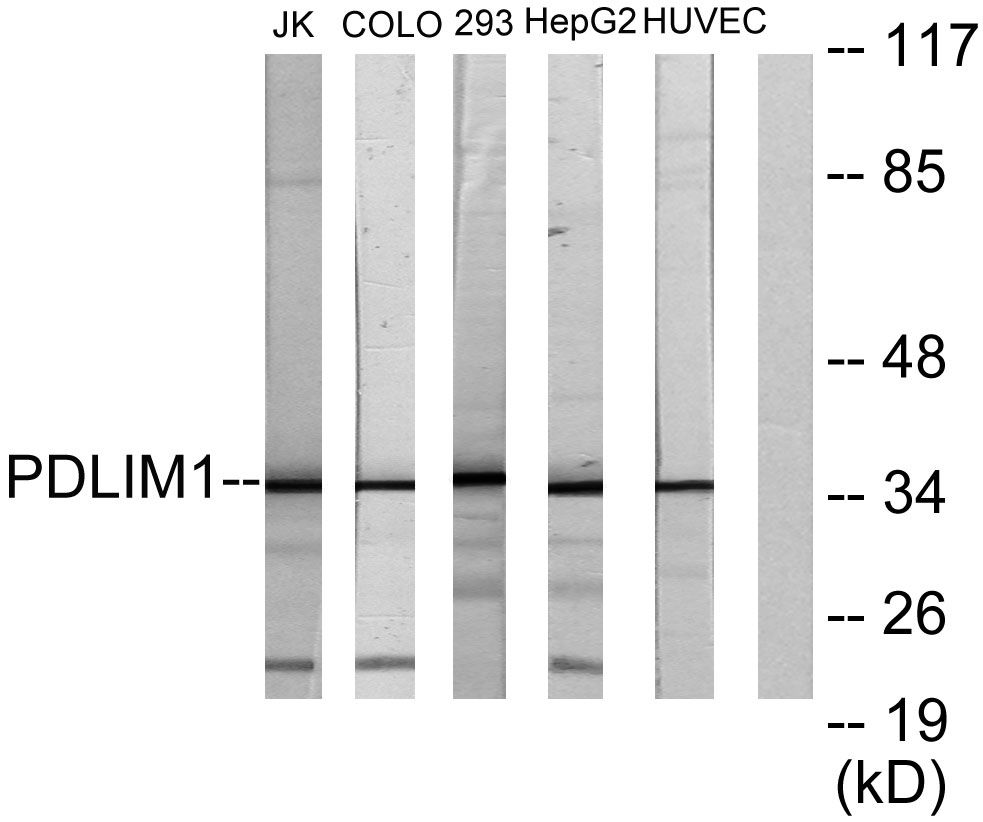CLP36 Polyclonal Antibody
- Catalog No.:YT0979
- Applications:WB;IHC;IF;ELISA
- Reactivity:Human;Mouse;Rat
- Target:
- CLP36
- Gene Name:
- PDLIM1
- Protein Name:
- PDZ and LIM domain protein 1
- Human Gene Id:
- 9124
- Human Swiss Prot No:
- O00151
- Mouse Gene Id:
- 54132
- Mouse Swiss Prot No:
- O70400
- Rat Gene Id:
- 54133
- Rat Swiss Prot No:
- P52944
- Immunogen:
- The antiserum was produced against synthesized peptide derived from human PDLIM1. AA range:61-110
- Specificity:
- CLP36 Polyclonal Antibody detects endogenous levels of CLP36 protein.
- Formulation:
- Liquid in PBS containing 50% glycerol, 0.5% BSA and 0.02% sodium azide.
- Source:
- Polyclonal, Rabbit,IgG
- Dilution:
- WB 1:500 - 1:2000. IHC 1:100 - 1:300. IF 1:200 - 1:1000. ELISA: 1:5000. Not yet tested in other applications.
- Purification:
- The antibody was affinity-purified from rabbit antiserum by affinity-chromatography using epitope-specific immunogen.
- Concentration:
- 1 mg/ml
- Storage Stability:
- -15°C to -25°C/1 year(Do not lower than -25°C)
- Other Name:
- PDLIM1;CLIM1;CLP36;PDZ and LIM domain protein 1;C-terminal LIM domain protein 1;Elfin;LIM domain protein CLP-36
- Observed Band(KD):
- 36kD
- Background:
- This gene encodes a member of the enigma protein family. The protein contains two protein interacting domains, a PDZ domain at the amino terminal end and one to three LIM domains at the carboxyl terminal. It is a cytoplasmic protein associated with the cytoskeleton. The protein may function as an adapter to bring other LIM-interacting proteins to the cytoskeleton. Pseudogenes associated with this gene are located on chromosomes 3, 14 and 17. [provided by RefSeq, Oct 2012],
- Function:
- function:Cytoskeletal protein that may act as an adapter that brings other proteins (like kinases) to the cytoskeleton.,similarity:Contains 1 LIM zinc-binding domain.,similarity:Contains 1 PDZ (DHR) domain.,subcellular location:Associates with the actin stress fibers.,subunit:Interacts with alpha-actinins 1, 2 and 4.,tissue specificity:Strongly expressed in the heart and skeletal muscle, moderately expressed in the spleen, small intestine, colon, placenta, and lung. A lower level expression is seen in liver, thymus, kidney, prostate and pancreas and is not found in the brain, testis, ovary, and peripheral blood leukocytes.,
- Subcellular Location:
- Cytoplasm . Cytoplasm, cytoskeleton . Cytoplasm, myofibril, sarcomere, Z line . Associates with actin stress fibers. .
- Expression:
- Strongly expressed in the heart and skeletal muscle, moderately expressed in the spleen, small intestine, colon, placenta, and lung. A lower level expression is seen in liver, thymus, kidney, prostate and pancreas and is not found in the brain, testis, ovary, and peripheral blood leukocytes.
- June 19-2018
- WESTERN IMMUNOBLOTTING PROTOCOL
- June 19-2018
- IMMUNOHISTOCHEMISTRY-PARAFFIN PROTOCOL
- June 19-2018
- IMMUNOFLUORESCENCE PROTOCOL
- September 08-2020
- FLOW-CYTOMEYRT-PROTOCOL
- May 20-2022
- Cell-Based ELISA│解您多样本WB检测之困扰
- July 13-2018
- CELL-BASED-ELISA-PROTOCOL-FOR-ACETYL-PROTEIN
- July 13-2018
- CELL-BASED-ELISA-PROTOCOL-FOR-PHOSPHO-PROTEIN
- July 13-2018
- Antibody-FAQs
- Products Images

- Western Blot analysis of various cells using CLP36 Polyclonal Antibody diluted at 1:1000
.jpg)
- Western Blot analysis of K562 cells using CLP36 Polyclonal Antibody diluted at 1:1000

- Immunofluorescence analysis of HepG2 cells, using PDLIM1 Antibody. The picture on the right is blocked with the synthesized peptide.

- Immunohistochemistry analysis of paraffin-embedded human heart tissue, using PDLIM1 Antibody. The picture on the right is blocked with the synthesized peptide.

- Western blot analysis of lysates from Jurkat, COLO205, 293, HepG2, and HUVEC cells, using PDLIM1 Antibody. The lane on the right is blocked with the synthesized peptide.



